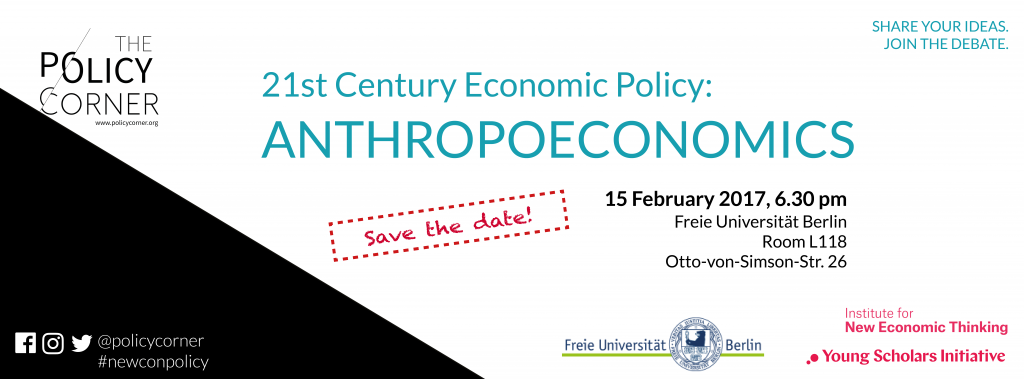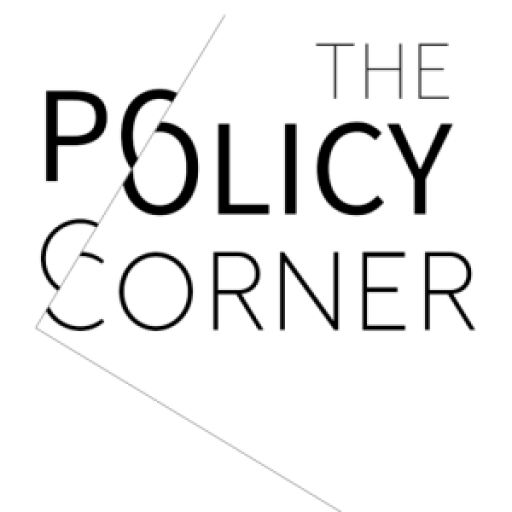Back to the Future? Populism and Spatial Inequality
The rise of populism, and the growing political polarization in advanced economies has exposed- and is driven by- the phenomenon of spatial inequality. Inequality between “thriving” and “declining” regions is not new, but the interaction of globalization and technological progress increases the returns to economies of scale, which amplify spatial inequalities by further concentrating “gains” and “losses.”
Recent research and current events have revealed the socio-economic implications of excessive spatial inequality. Christopher Murray, director of the Institute for Health Metrics and Evaluation at the University of Washington, recently found that the discrepancy between US counties with the longest and shortest life spans (20 years) is equivalent to the difference between low-middle income developing countries such as India (67 years), and high-income countries such as Japan (87 years).[1] Low-life expectancy counties in states like Michigan or Pennsylvania typically experienced substantial employment losses in manufacturing – often associated with an overall decline in public and private services – and were key to Trump’s electoral success.
In Europe, growing political polarization is also a consequence of spatial inequality. London, a thriving global metropolis, accounts for over 30% of UK GDP.[2] Over 60% of Londoners voted against Brexit, while in Doncaster, located in the former northern industrial heartland, 7 out 10 people voted to leave the EU.[3] In Germany, which has comparatively lower levels of spatial inequality vis-à-vis other advances economies, the recent electoral success of the right-wing AFD can also be attributed to what Hajo Funke of Berlin’s Free University calls a “thinning out of local infrastructure,” which means that in parts of eastern Germany “you have to travel 60km to the nearest district court to get a living will or . . . have a car registered.”[4] If policymakers don’t provide answers to credible policy proposals to address this dynamic, there is a risk that the social contract underpinning societal support for global integration and liberal democracy could fully unravel.
Spatial inequality is driven by what urban economist Richard Florida refers to as “winner-takes-all-urbanism.”[5] For many economic activities, especially those associated with the flourishing “knowledge economy,” industry localization economies (within-industry spillovers) are key to thriving in cutting-edge international competition.[6] Clustering facilitates the flow of ideas, access to finance, and opportunities for career advancement. The resulting extent of concentration can be enormous.
According to Florida, only 0.2% of all US zip codes attracted more than $100 million in venture capital investment, while in San Francisco, two neighbourhoods attracted over $1 billion.[7] Meanwhile, “declining” regions can become poverty traps, where economic deterioration leads to a shrinking tax base, which weakens local public services. Lower housing prices often attract people on fixed government salaries, such as public pensioners, which do not necessarily revive an economy.
Orthodox economics has often maintained that it is not worthwhile to bail out failing cities, but data on intra-regional migration suggests that people are simply not perfectly mobile. Undoubtedly, there are “distortions,” such as strict zoning laws, that saturate housing markets in thriving cities, in addition to location-specific public benefits, which discourage people from emigrating. However, according to The Economist, each year a mere 2% of Americans move across state lines, while only 1.5% of Europeans move between regions within their country of origin.[8] Individuals’ identities, social capital, and sense of belonging are, as Karl Polanyi would say, “embedded” in “place.”[9]
So how can policymakers leverage global investment flows, value chains, and spillover effects to reverse the fortunes of “declining” regions? To provide the basis for the long-term revival of innovative production activities, I propose a framework rather than a set of policy prescriptions. Establishing a cluster, and reviving distressed regions represents a first mover dilemma, which is why coordination between firms, business associations, educational institutions, and different levels of government is so crucial. Greenville in South Carolina, a previously distressed city, attracted BMW and Volvo automotive plants not only due to tax breaks, but because local community colleges were supported to provide training to auto-suppliers, the resulting center for automobile research ensuring that Greenville would remain a competitive location.[10]
In order to deliver context-specific solutions, my framework proposes the creation of coordination boards for declining regions. These coordination boards would facilitate the incubation of public-private partnerships to coordinate investments in transport infrastructure, industry-specific production capacity, and research and training. These local incubators would go far beyond existing EU structural funds or various “enterprise zone” programs, which often lack resources, direction, and political will.
Federal technology and innovation policy, in addition to financial incentives, can play a critical role in supporting this incubation process. In Germany, the Frauenhofer Gesellschaft[11], a partially publicly funded network of 69 geographically dispersed institutes for applied research, develops improved technologies in partnership with German firms in sunrise industries such as nanotechnology, cloud computing, or food chain management[12].
Similarly in the United States, the government’s $146 billion annual research and development (R&D) investment portfolio could receive further resources and be deployed to provide federally funded R&D centers (FFRDCs) with a specific mandate to reduce spatial inequality. A recent Brookings Institution report showed that some FFRDCs, such as Manufacturing USA’s Institutes of Manufacturing Innovation and the Advanced Research Projects Agency-Energy, have already helped nurture clusters in struggling areas like Chattanooga, Tennessee, and Mobile, Alabama.[13]
According to a recent OECD report, which laments the growing productivity gap between global frontier and laggard firms, the future of productivity growth, especially in distressed areas, will largely depend on reviving knowledge diffusion.[14] By providing tax incentives to those frontier firms willing to enter knowledge diffusion partnerships with laggard firms, coordination boards could help reignite productivity growth in their respective regions. Lastly, expanding initiatives like the New Markets Tax Credit,[15] which offers a 39% credit against federal taxes for every dollar of loans, investment, and consulting services offered to distressed communities, could productively channel record-level corporate savings.
Becoming an attractive destination for a cluster necessitates nurturing an ecosystem, not merely providing one input. As the great economist Albert Hirschman emphasized, some product activities create “multi-dimensional conspiracies” in favor of local development, by inducing entrepreneurial energies, creating positive spillovers, and molding political groups into a developmental coalition.[16] Instead of promising a return to the past, policymakers should contemplate Hirschman, and support the incubation of production capacity in distressed areas.[17]
This is the winning essay of our competition on Rethinking Economic Policy. Join the public award ceremony event on 15 February 2017 in Berlin to discuss this essay and more ideas for human-centered economic policy in the 21st century with the author George Kibala Bauer, a panel of experts and other young scholars!

References
[1] Rob Stein, ”Life Expectancy Can Vary By 20 Years Depending On Where You Live,” NPR, May 08, 2017, accessed October 25, 2017, http://www.npr.org/sections/health-shots/2017/05/08/527103885/life-expectancy-can-vary-by-20-years-depending-on-where-you-live.
[2] Richard Florida, “Those ‘Big, Booming, Liberal Cities’ Are, In Fact, Too Small,” CityLab, March 30, 2017, Accessed October 26, 2017, https://www.citylab.com/life/2017/03/the-big-liberal-city-isnt-big-enough/521094/.
[3] Owen Jones, “Brexitland: Too many foreigners – way, way too many,” The Guardian. March 10, 2017. Accessed October 29, 2017, https://www.theguardian.com/commentisfree/2017/mar/10/labour-brexit-heartland-towns-doncaster-communities.
[4] John Burn-Murdoch, “Germany’s election and the trouble with correlation,” Financial Times, October 2, 2017, Accessed October 18, 2017. https://www.ft.com/content/94e3acec-a767-11e7-ab55-27219df83c97.
[5] Richard Florida, “Why America’s Richest Cities Keep Getting Richer,” The Atlantic, April 12, 2017. Accessed October 29, 2017. https://www.theatlantic.com/business/archive/2017/04/richard-florida-winner-take-all-new-urban-crisis/522630/.
[6] Sukkoo Kim, Spatial inequality and economic development: theories, facts, and policies. Washington: International Bank for Reconstruction and Development, World Bank Publications, 2008. https://elibrary.worldbank.org/doi/pdf/10.1596/978-0-8213-7573-0.
[7] These two neighborhoods are South of Market/Mission District (94103) and Rincon Hill (94105)
[8] The figure is even lower for movement between countries (0.37%), despite freedom of movement afforded by the operation of the Shengen system and the single market. “Globalisation has marginalised many regions in the rich world,” The Economist, October 21, 2017. Accessed October 29, 2017. https://www.economist.com/news/briefing/21730406-what-can-be-done-help-them-globalisation-has-marginalised-many-regions-rich-world.
[9] Karl Polanyi Origins of our time: the great transformation (London: V. Gollancz, 1945).
[10] “Globalisation has marginalised many regions in the rich world.” The Economist, October 21, 2017. Accessed October 23, 2017. https://www.economist.com/news/briefing/21730406-what-can-be-done-help-them-globalisation-has-marginalised-many-regions-rich-world.
[11] Similar research centers in Germany include: The Helmholtz Association of German Research Centres, and the Leibniz Association.
[12] “Institutes.” Fraunhofer-Gesellschaft. Accessed October 25, 2017. https://www.fraunhofer.de/en/institutes.html.
[13] Stephen Ezell and Scott Andes. “Localizing the economic impact of research and development,” Brookings, August 24, 2017. Accessed October 18, 2017. https://www.brookings.edu/research/localizing-the-economic-impact-of-research-and-development/.
[14] The future of productivity. Report. December 2, 2015. Accessed October 22, 2017. https://www.oecd.org/eco/growth/OECD-2015-The-future-of-productivity-book.pdf.
[15] “New Markets Tax Credit .” Community Development Financial Institutions Fund. Accessed October 24, 2017. https://www.cdfifund.gov/programs-training/Programs/new-markets-tax-credit/Pages/default.asp.
[16] Albert O. Hirschman, Amartya Sen, and Jeremy Adelman. Essays in Trespassing: Economics to Politics and Beyond, (Cambridge: Cambridge University Press, 1981:94).
[17] Though this deserves its own paper, and applies mostly to the US, excessive market concentration due to lax anti-trust is exacerbating winner-take-all urbanism by hampering knowledge diffusion, deterring market entry, and decreasing long-term investments in innovation.
Is the Estonian e-residency program a digital fairytale?
Estonia is considered a role model for digital public administration. The Estonian e-residency program is the most recent e-government initiative, which promises entrepreneurs worldwide access to its public administration 24/7. In its current state, the program cannot achieve its ambitious goal due to structural misconceptions that have caused issues around its efficiency and inclusiveness.
School Choice in the United States
School choice encompasses a variety of programs run by the U.S. government that allows parents to choose a school other than their local publicly funded school. Wealthy parents have been able to afford choices in education for a very long time. Now it is time that we allow poorer citizens to choose an education that best fits the needs of their children. School choice will allow this to happen.
Inflation During the Pandemic: Is ‘Transitory’ a Myth?
Caused by pent-up demand and intense supply disruptions, inflation has risen to its highest level in decades. As the specter of “entrenched inflation” looms, central banks must use monetary policy sensibly without overreacting. Central banks should allow time for overheated demand and supply disruptions to ease, lest the world’s advanced economies face their hardest landing yet.
